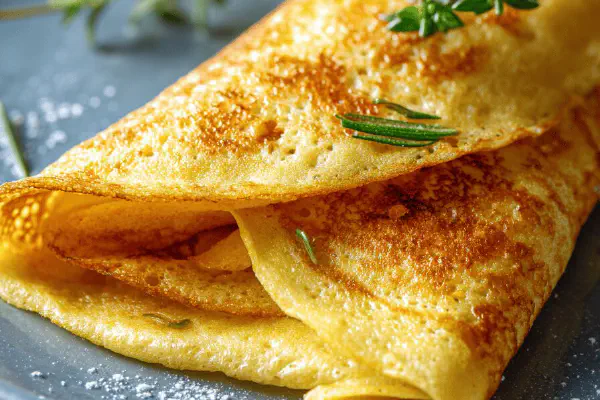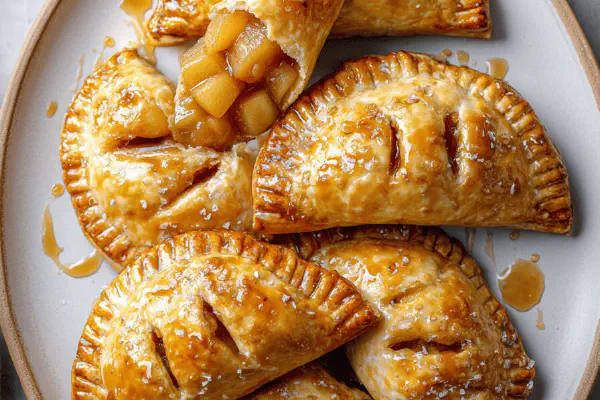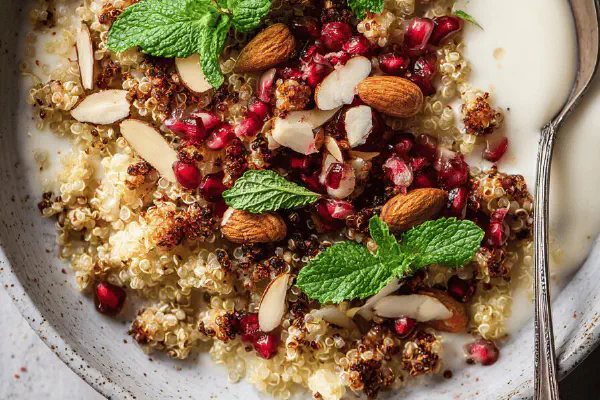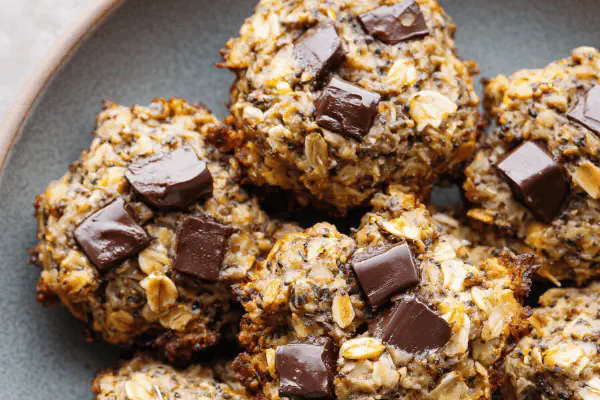Gluten-Free Corn Crepes

By Emma
Certified Culinary Professional
Ingredients
- 2 large eggs
- 260 ml (1 cup plus 2 tbsp) milk of choice
- 240 ml (1 cup) corn flour
- 1.25 ml (1/5 tsp) fine salt
- Softened butter or coconut oil for pan
About the ingredients
Method
- First, crack eggs into a medium bowl. Whisk briskly. Add milk, then salt, whisk well until combined.
- Gradually sprinkle corn flour into wet mix. Whisk constantly to avoid lumps, batter should be loose but not watery. Adjust by adding tiny splash more milk or a spoonful of flour if needed.
- Preheat nonstick pan to medium heat (around 5-6 on electric). It has to shimmer, not smoke.
- Smear pan lightly with softened butter or coconut oil—too much fat ruins edges, too little makes sticking.
- Pour about 120 ml (1/2 cup) batter; swirl quickly to cover base evenly and thinly. Look for edges drying and bubbles forming, slight browning underneath.
- When edges lift easily and bottom is golden with spots, flip with spatula. Cook other side briefly, 20-25 seconds, no longer or it dries out.
- Stack finished crepes on warm plate, cover loosely with foil to keep pliable.
- If batter thickens on standing, whisk in a splash of milk.
- Test first crepe for doneness; adjust heat or cooking time accordingly.
- Serve warm, as is or with favorite fillings.
Cooking tips
Chef's notes
- 💡 Whisk eggs first for uniform mix. Sprinkle corn flour slowly, avoid lumps. Batter should drip but not swim, like thick syrup. Add milk dropwise if thickening while resting. Too watery makes tears, too thick fights flipping.
- 💡 Heat pan medium. Watch shimmer not smoke. Butter or coconut oil coats edges lightly. Too much fat means greasy soggy edges; too little sticks and rips crepes. Listen for soft hiss, no crackle or sizzle.
- 💡 Pour quick 120 ml batter, swirl fast to thin even layer. Bubbles on top signal cooking. Edges drying means ready to flip. Use thin metal spatula, quick gentle flip to prevent tearing.
- 💡 Stack crepes covered loosely with foil, traps moisture avoids drying. If batter sits thick, break up with splash milk, whisk brisk. Adjust heat if bottom browns too fast or crepe remains wet inside.
- 💡 Substitutions matter: oat milk works but crepes get brittle fast. Coconut oil gives nutty aroma, less slippery than butter. Salt very low, balance fillings instead. Eggs must stay; no water swaps, batter fails binding.
Common questions
How to fix lumpy batter?
Whisk dry flour in slowly, not dump. Use constant stirring. Lumps mean chewy pockets. If lumps too firm, strain batter with fine sieve, or whisk vigorously to break.
Can I use almond milk?
Yes but crepes might crisp quicker. Adjust batter thickness with milk volume, slightly reduce flour if needed. Coconut oil helps with sticking when dairy-free. Butter swap affects taste.
Crepes tearing when flipping?
Usually too thin batter, pan temp too low, or spatula too thick. Batter should coat thin but not watery. Heat must be medium, pan warm enough for quick set edges before flip.
How long keep crepes warm?
Covered with foil on warm plate, 10-15 mins max. Beyond that, crepes dry or get gummy. Cooler temps cause rubbery texture. To store longer refrigerate wrapped, reheat gently steam or low heat.



